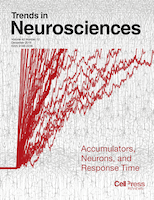
Frontiers in Integrative Neuroscience
Scope & Guideline
Bridging disciplines for a comprehensive view of neuroscience.
Introduction
Aims and Scopes
- Interdisciplinary Neuroscience Research:
The journal promotes studies that integrate various fields, such as cognitive neuroscience, behavioral neuroscience, and clinical neuroscience, fostering collaboration among researchers from diverse backgrounds. - Mechanisms of Brain Function and Disorders:
A core focus is on understanding the neural mechanisms underlying normal brain function and various neurological and psychiatric disorders, seeking to elucidate pathophysiological processes. - Innovative Therapeutic Approaches:
The journal highlights research exploring novel therapeutic strategies, including non-pharmacological interventions and bioelectronic medicine, aimed at treating neurological and psychological conditions. - Developmental and Lifespan Perspectives:
Research on developmental neuroscience and how brain function and behavior evolve across the lifespan is emphasized, with a focus on early intervention and neurodevelopmental disorders. - Mind-Body Interactions:
The relationship between psychological processes and physiological responses is a significant area of interest, particularly in understanding pain, stress, and emotional well-being. - Cultural and Social Influences on Neuroscience:
Studies examining how cultural, societal, and environmental factors influence brain function and behavior are increasingly included, reflecting the journal's commitment to a holistic understanding of neuroscience.
Trending and Emerging
- Integrative Approaches to Pain Management:
Recent publications increasingly focus on non-pharmacological treatments for pain, including mindfulness, acupuncture, and other holistic therapies, highlighting a shift towards integrative pain management strategies. - Neurodevelopmental Disorders and Interventions:
There is a growing emphasis on understanding and addressing neurodevelopmental disorders, particularly autism spectrum disorder, with research focusing on early interventions and the role of sensory processing. - Impact of Lifestyle on Brain Health:
Studies exploring the effects of physical activity, nutrition, and mindfulness on brain health are gaining traction, underscoring the importance of lifestyle factors in neurological health and cognitive function. - Neuroimmunology and Brain-Body Interactions:
Research on the interplay between the immune system and the brain is expanding, reflecting an increasing interest in how neuroinflammation and immune responses influence neurological health. - Cultural and Societal Neuroscience:
Emerging themes explore how cultural and social contexts impact brain function and behavior, emphasizing the importance of understanding neuroscience within broader societal frameworks.
Declining or Waning
- Traditional Pharmacological Approaches:
There appears to be a decreasing emphasis on traditional pharmacological treatments for neurological disorders, as researchers increasingly explore alternative and integrative therapies. - Basic Neuroscience Research:
Papers focused solely on fundamental neuroscience mechanisms without a clear translational or clinical application seem to be less frequent, indicating a trend towards applied research. - Single-Domain Studies:
Research that does not incorporate interdisciplinary approaches or fails to connect with other fields of study is becoming less prevalent, as the journal encourages more integrative research methodologies. - Neuroscience Without Clinical Relevance:
There is a decline in studies that do not address clinical implications or applications, reflecting a broader trend towards research that directly informs clinical practice.
Similar Journals

NATURE REVIEWS NEUROSCIENCE
Connecting insights with groundbreaking research.NATURE REVIEWS NEUROSCIENCE is a prestigious journal published by NATURE PORTFOLIO, renowned for its commitment to advancing the field of neuroscience. Since its inception in 2000, it has become a significant platform for disseminating comprehensive reviews and insights that shape the understanding of neurological science. With an impressive Scopus ranking of #2 out of 113 in the General Neuroscience category, this journal consistently engages the top 2% of researchers and professionals in the field, underscoring its impactful contributions. The journal not only provides a forum for high-quality reviews but also bridges emerging research trends with established knowledge, fostering a robust discourse among scholars and practitioners. As a Q1 journal in Neuroscience (miscellaneous), NATURE REVIEWS NEUROSCIENCE offers invaluable access to critical research developments, making it an essential resource for students, researchers, and professionals aiming to stay at the forefront of neuroscience advancements. Explore the latest findings and engage with a global community dedicated to unraveling the complexities of the nervous system.

NEUROSCIENCE RESEARCH
Elevating Understanding in the Neuroscience LandscapeNEUROSCIENCE RESEARCH, published by Elsevier Ireland Ltd, is a leading journal in the field of neuroscience, with a notable reputation for disseminating high-quality research that spans a variety of topics within the discipline. With an ISSN of 0168-0102 and an E-ISSN of 1872-8111, this journal serves as a vital platform for both established researchers and emerging voices in the field. Ranking in the Q2 quartile in both Medicine and Neuroscience categories, it has been recognized as a reliable source of innovative findings since its inception in 1984, with continuous publication through 2024. Although it does not currently offer Open Access options, the journal is indexed in Scopus, holding a significant position at Rank #48/113 in General Neuroscience, reflecting its contribution to advancing the understanding of neural mechanisms across various contexts. With its address anchored in Ireland, NEUROSCIENCE RESEARCH plays an essential role in bridging scientific inquiry and practical applications, making it an indispensable resource for researchers, professionals, and students dedicated to the burgeoning field of neuroscience.

NEUROBIOLOGY OF LEARNING AND MEMORY
Pioneering Research on Memory and Learning DynamicsNeurobiology of Learning and Memory is a prestigious journal dedicated to the exploration of the neural mechanisms underlying learning and memory processes. Published by Academic Press Inc Elsevier Science, this journal boasts a strong reputation within the field, as evidenced by its impressive impact factor and high quartile rankings in multiple categories, including Q1 in Behavioral Neuroscience and Q2 in Cognitive Neuroscience. Having provided a platform for groundbreaking research since its inception in 1995, the journal aims to disseminate influential findings that further our understanding of cognitive processes, shaped by robust empirical studies and theoretical developments. Researchers and professionals in neuroscience, psychology, and related disciplines will find invaluable insights and advancements that underscore the journal's commitment to fostering knowledge and innovation within these fields. While it currently operates under a subscription model, its comprehensive coverage of crucial topics positions it as a vital resource for those engaged in the intricate study of learning and memory.

BEHAVIORAL NEUROSCIENCE
Charting New Territories in Behavioral NeuroscienceBehavioral Neuroscience, published by the American Psychological Association, is a leading academic journal in the field of behavioral neuroscience, which focuses on the biological underpinnings of behavior across various contexts. Established in 1983, this journal has been a vital resource for researchers and professionals seeking to understand the intersection between neural processes and behavioral patterns. With an impressive impact factor that positions it in the Q2 category of Behavioral Neuroscience for 2023, it ranks 58th out of 88 journals in its field, showcasing its significance as a contributor to scientific literature. The journal fosters the dissemination of high-quality research and innovative theories that address critical questions in neuroscience, providing a platform for interdisciplinary collaboration. While it does not offer open access, the extensive distribution through academic libraries ensures wide availability for students, practitioners, and researchers alike. By continuing to publish cutting-edge articles through 2024 and beyond, Behavioral Neuroscience remains essential for those looking to stay at the forefront of advancements in understanding the biological mechanisms of behavior.

RESTORATIVE NEUROLOGY AND NEUROSCIENCE
Unraveling Neural Mysteries: Your Gateway to Restorative AdvancesRESTORATIVE NEUROLOGY AND NEUROSCIENCE, published by IOS PRESS, is a premier journal dedicated to advancing the fields of neurology and neuroscience. Since its inception in 1989, this journal has played a crucial role in disseminating cutting-edge research findings and innovative therapeutic approaches that aim to restore neurological function and improve patient outcomes. With a focus on developmental neuroscience and clinical neurology, the journal holds a 2023 Scopus ranking of #129 out of 400 in clinical neurology, and #15 out of 37 in developmental neuroscience, reflecting its significant influence in these domains. Although it operates on a non-open access model, RESTORATIVE NEUROLOGY AND NEUROSCIENCE offers valuable insights for researchers, healthcare professionals, and students seeking to deepen their understanding of neural restoration mechanisms and therapeutic strategies. Located in Amsterdam, Netherlands, the journal continues to foster scholarly dialogue and innovation, contributing to the global advancement of neuroscience and neurology.

TRENDS IN NEUROSCIENCES
Advancing Knowledge in Neural ProcessesTRENDS IN NEUROSCIENCES, published by CELL PRESS, is a leading journal in the field of neuroscience, offering cutting-edge insights and important developments in the rapidly evolving landscape of brain research. With an impressive Impact Factor and ranking in the top quartile (Q1) of the category for Neuroscience (miscellaneous), it is positioned as a vital resource for researchers and professionals seeking to stay abreast of the latest discoveries and trends from 1978 to the present. Specifically ranked #3 out of 113 in General Neuroscience by Scopus, this journal promotes the interdisciplinary exchange of ideas and knowledge, making it an essential platform for students and experienced scholars alike. Although it is not an Open Access journal, its value lies in its rigorous peer-review process and commitment to maintaining the highest standards of academic integrity. By continuing to explore the complexities of neural processes and behavior, TRENDS IN NEUROSCIENCES plays a crucial role in shaping the future of neuroscience research and education.

Neuropsychologia
Unlocking the Secrets of the Mind through Innovative StudiesNeuropsychologia, published by PERGAMON-ELSEVIER SCIENCE LTD, is a premier journal that delves into the intersections of psychology and neuroscience, specifically focusing on behavioral and cognitive processes. Since its inception in 1963, this esteemed journal has been a vital platform for researchers, professionals, and students, showcasing innovative studies and advancements in the fields of Behavioral Neuroscience, Cognitive Neuroscience, and Experimental Psychology. With a commendable impact factor, placing it in the Q2 category across multiple disciplines, Neuropsychologia is recognized for its contribution to the scientific community, ranking among the top journals in both Experimental and Cognitive Psychology and Neuroscience. The journal's commitment to excellence is evident in its rigorous peer-review process and its mission to disseminate cutting-edge research, making it an invaluable resource for those seeking to expand their knowledge and insights in neuropsychology. For further reading, the journal is accessible in both print and digital formats, ensuring that researchers can easily engage with the latest findings and theoretical advancements in this dynamic field.

Annual Review of Neuroscience
Driving Innovation in Neuroscience ScholarshipThe Annual Review of Neuroscience, published by Annual Reviews, is a premier journal that has been at the forefront of neuroscience research since its inception in 1978. With an ISSN of 0147-006X and E-ISSN 1545-4126, this leading academic journal boasts a remarkable impact factor, placing it in the prestigious Q1 category in Neuroscience (miscellaneous), with an impressive Scopus ranking of 4 out of 113 and a stellar 96th percentile in general neuroscience. Focused on publishing comprehensive and authoritative review articles, the Annual Review of Neuroscience aims to synthesize and critically evaluate the latest advances in the field, making it an indispensable resource for researchers, professionals, and students alike. While it does not offer open access, the insights and discoveries highlighted in its issues are crucial for those dedicated to understanding the complexities of the nervous system and driving forward innovative research. With a commitment to excellence and a forward-looking perspective, this journal continues to shape and influence the future of neuroscience.

COGNITIVE AFFECTIVE & BEHAVIORAL NEUROSCIENCE
Enhancing Knowledge: Investigating the Interplay of Mind and BehaviorCOGNITIVE AFFECTIVE & BEHAVIORAL NEUROSCIENCE (ISSN: 1530-7026, E-ISSN: 1531-135X) is an esteemed journal published by SPRINGER that aims to advance the understanding of the interplay between cognitive processes, affective states, and behavioral responses in the field of neuroscience. Established in 2001, the journal provides a rigorous platform for disseminating high-quality research, with a significant focus on both Behavioral Neuroscience and Cognitive Neuroscience. Classified in Q1 and Q2 quartiles for 2023, it ranks highly within its categories, holding positions of #37 out of 88 and #46 out of 115 respectively in the Scopus listings. Although not an open-access publication, readers can access a wealth of valuable insights and innovative findings that enrich the scientific community's understanding of brain function and behavior. The journal's emphasis on interdisciplinary research contributes to its esteemed reputation, making it a vital resource for students, researchers, and professionals striving to explore the complex nature of the human mind and behavior.

Behavioral and Brain Functions
Pioneering Research in Behavioral NeuroscienceBehavioral and Brain Functions is a leading Open Access journal published by BMC, dedicated to advancing the field of behavioral neuroscience, cognitive neuroscience, and biological psychiatry since its inception in 2005. This esteemed journal, based in the United Kingdom, has established itself as a vital resource for researchers and professionals, boasting a remarkable influence demonstrated by its Q1 and Q2 rankings across multiple relevant categories. With its commitment to providing unrestricted access to high-quality research, the journal facilitates the dissemination of significant findings in understanding the complex interactions between behavior and brain function. The journal ranks impressively within the Scopus database, positioning itself among the top-tier publications in its categories, making it an essential platform for academic discourse and innovation. As it converges through 2024, Behavioral and Brain Functions continues to play a crucial role in shaping the forefront of neuroscientific inquiry, inviting contributions that challenge our understanding and promote further exploration in these dynamic fields.